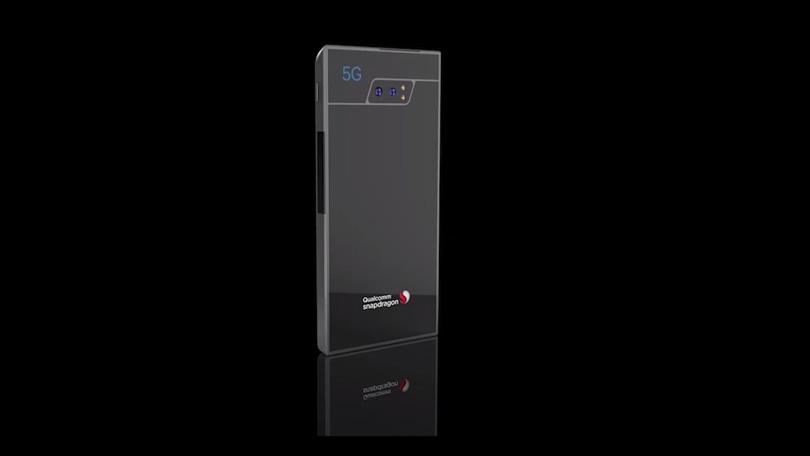
First up was the 5G connectivity news. Qualcomm redesigned its X50 chipset, which launched in October 2016, to fit in a compact form factor. Thanks to a millimeter-wave antenna that measures the size of a dime — the smallest millimeter wave design on the market, and one Qualcomm plans to shrink 50 percent over the next year — it squeezes into an edge-to-edge reference design that is 9mm (0.35 inches) thick.
It’s fast, unsurprisingly. Qualcomm says it achieved “gigabit” downloads on the 28GHz millimeter wave frequency band, and that it expects speeds to climb to 5Gbps once 5G deployments are completed.
It will be a while before it hits store shelves, though. Qualcomm said the first consumer devices will launch by the first half of 2019, after the 5G draft spec’s finalization in December.
A speedy radio and reference design isn’t the only thing Qualcomm showed off in Hong Kong. It took the wraps off the Snapdragon 636, an eight-core, 14nm successor to the Snapdragon 630. The new system-on-chip is up to 40 percent faster than the 630, Qualcomm said, and delivers 10 percent better graphics performance thanks to the Adreno 509.
But the improvements don’t stop there. The Snapdragon 636 supports Full HD+ (2,160 x 1,080 pixels) screens and Qualcomm’s Assertive Display technology, which automatically adjusts the brightness to ambient lighting. On the photography side of the equation, the chip’s Spectra 160 ISP supports either one 24-megapixel sensor or two 16-megapixel cameras, and video recording in 1080p at 120 frames per second (fps) or 4K at 30 fps.
The Snapdragon 636 supports Quick Charge 4, Qualcomm’s newest fast-charging standard that can deliver up to five hours of talk time with five minutes of charging. But it won’t benefit from Qualcomm’s work on 5G, unfortunately. It ships with an X12 LTE modem, which maxes out at 600Mbps.
Qualcomm expects to start shipping the chip to partners in November and it might not be long before the first Snapdragon 636-equipped devices come to market. Qualcomm said the chip’s compatible with boards originally designed for the 630 or 660, which should, in theory, make it easier for smartphone manufacturers to re-use existing designs.
Editors' Recommendations
- 5G home internet: What is it, and should you get it?
- Have T-Mobile? Your 5G service is about to get much faster
- This tiny dongle will change 5G connectivity forever
- What is 5G UC? What that icon on your phone really means
- This new MediaTek chip is about to bring 5G to a lot more devices


